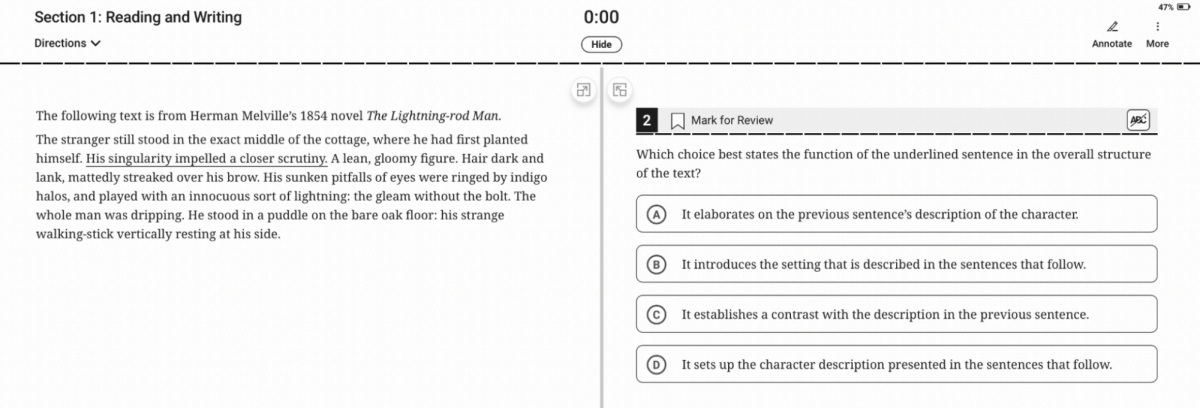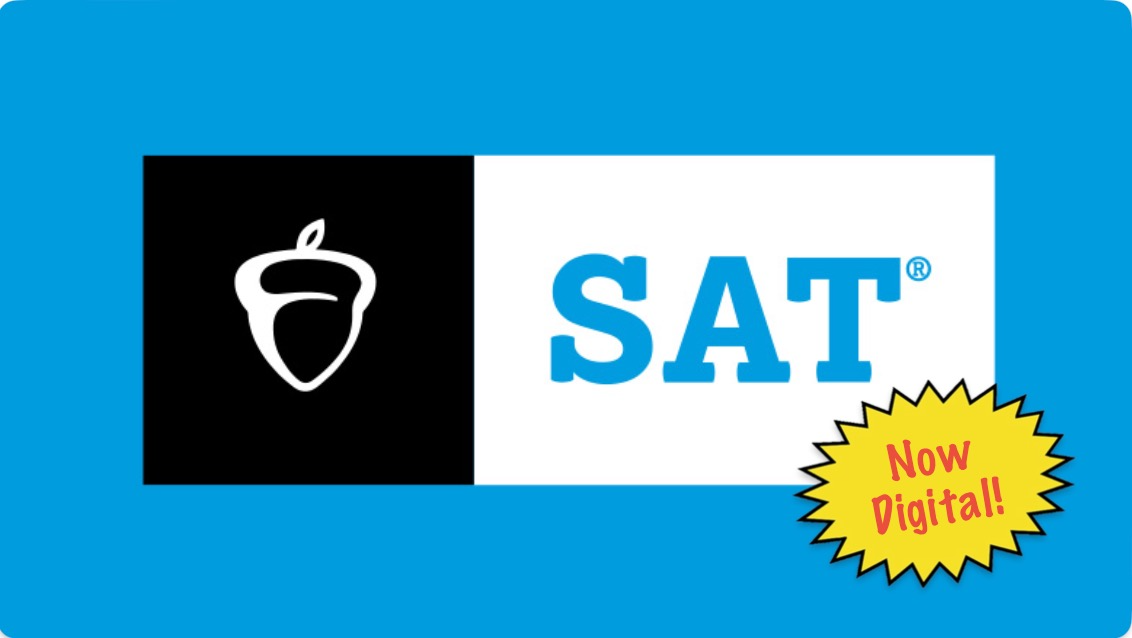In December 2023, the final paper SAT was administered in the United States with the next SAT, on March 9, 2024, in a digital format. Besides the obvious difference between taking the test on a computer vs taking it on paper, there are several other differences that students can expect between the digital version of the SAT and the previous paper.
Adaptive Test
The fact that the SAT is going digital allows the test for more features than what could be done with a paper SAT. The biggest difference is that the test is adaptive to the student’s responses. The Reading and Writing section and the Math section both contain two modules. Within each section, depending on how well students answer the questions in the first module, they will be given either a harder or easier second module. If the students get the easier second module, then the points they can earn for that section will be capped at around 590, a significant difference from the max of 800 points for the section.
Time
The new digital test is shorter than the previous exam. The paper SAT lasted 3 hours, whereas the new digital SAT is 2 hours and 14 minutes (both of these durations do not include break times, the time the proctor takes to give instructions, etc.). Another benefit for students taking the digital SAT is that there is a timer at the top that displays how much time is left in the section. If students do not wish to see this, they can choose to hide the timer.
Reading/Writing Section
One big difference between the paper SAT and the digital SAT is the Reading and Writing portion. On the original paper SAT, there was a 65-minute Reading section, which contained 52 questions about 5 passages, and a 35-minute Writing & Language section containing 44 questions about 4 passages.
The reading comprehension and grammar questions will be mixed in the digital SAT, as it combines these sections into one Reading and Writing section. This section will contain two modules, with each module being 32 minutes long and containing 27 questions. The most noticeable difference between the paper and digital Reading and Writing sections is the length of the passages. On the paper SAT, students had to read long passages (500-700 words) and answer 10-11 questions on them. On the new digital SAT, each passage is only about a paragraph (25-150 words), and there is only one question per passage.

Math Section
Like the digital Reading and Writing section, the digital Math section will also have two modules. Each module will be 35 minutes and have 22 questions. Unlike the paper SAT, where there was a No-Calculator section (25 minutes, 20 questions) and a Calculator section (55 minutes, 38 questions), a calculator is allowed for both modules. There is a Desmos graphing calculator built into the testing application, but students are permitted to bring their calculators as well if they prefer.
Student Opinion
Many students have already gotten a taste of the new digital SAT through the digital PSAT administered in October 2023.
Neha Konatham, a junior who has taken both the December SAT, which was on paper, and the digital PSAT, says that she has mixed feelings about the adaptive quality of the test. “What I don’t like is that everyone doesn’t get the same questions. If you do badly on the first module, you get an easier one, but other people get a harder one. On the other hand, it is helpful for people. If you did really bad on the first part, the second part would be easier so you would get more points than if you were to get the same thing as everyone else.” She also adds that she preferred the shorter passages on the digital PSAT. Since there was less information, it was easier for her to understand each passage.
April Zhang is another junior who took both the December SAT and the digital PSAT. She also had a more negative view of the adaptive aspect. She says it’s “a bit scary to me, as I know I don’t test super consistently. A lot of the time, I need some time to warm up and that can impact me negatively if the test is adaptive.”
She agrees that the shorter passages are easier, stating “Sometimes, one passage being confusing will affect multiple questions, and therefore it’s easy to get whole groups of questions wrong.”
Both Neha and April agreed that they didn’t mind taking the test on a computer rather than taking it on paper. April adds, “The electronic was better in terms of organization and I liked viewing a timer and the total questions.” They both agree that it is hard to say if one test is harder or easier than the other, as they each come with their own set of advantages and disadvantages.
How to Prepare
The PSAT was not the only chance to experience the testing application for the SAT. Any student can download Bluebook for free from CollegeBoard, which will be used on the testing day as well. On Bluebook, students can do a ‘Test Preview’ which will allow them to become familiar with the testing platform, or test their skills with the 4 full-length practice tests. Khan Academy is another free resource that can be used to learn about the different types of test questions and practice each skill individually.
Other Options
If a student finds the idea of a digital test unappealing, there are other options. For example, the ACT will continue to offer a paper version of their test (though they are introducing the option of a digital test as of Spring 2024). Another option would be to not take any type of standardized test at all.
According to Inside Higher Ed, “only 4 percent of colleges that use the Common Application system require a standardized test such as the SAT or the ACT for admission.” For some people, this might mean spending their time on other efforts rather than studying for a test that may not be necessary for college applications.
Sources:
https://www.princetonreview.com/college/sat-sections
https://www.piqosity.com/digital-sat-format-modules-easy-vs-hard/






